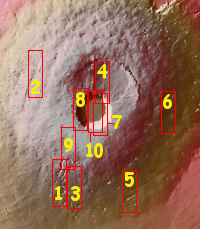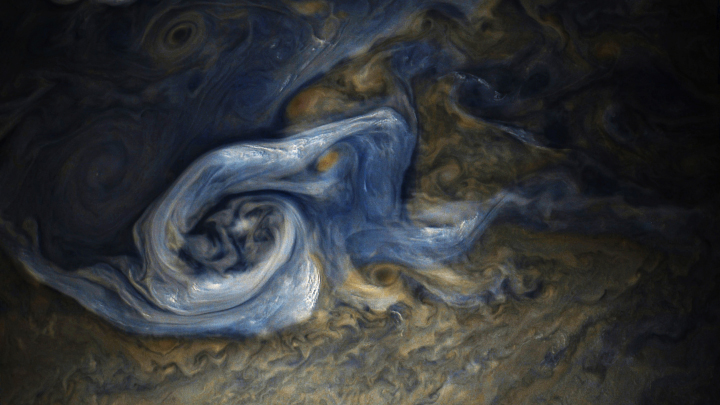Haze on Pluto lowers its global climate temperature 54º F
Using data collected during New Horizons’ fly-by, scientists have found that the planet’s atmosphere is 54º F colder than predicted, and from this they theorize that the presence of haze in that atmosphere is what cools it.
Pluto’s atmosphere is made mostly of nitrogen, with smaller amounts of compounds such as methane. High in the atmosphere — between 500 and 1,000 kilometres above the surface — sunlight triggers chemical reactions that transform some of these gases into solid hydrocarbon particles.
The particles then drift downward and, at around 350 kilometres above Pluto’s surface, clump with others to form long chemical chains. By the time they reach 200 kilometres’ altitude, the particles have transformed into thick layers of haze, which the New Horizons spacecraft saw dramatically blanketing Pluto.
Zhang and his colleagues compared the heating and cooling effects of the atmosphere’s gas molecules to those of its haze particles. Earlier studies have suggested that the presence of gas molecules, such as hydrogen cyanide, could help explain why Pluto’s atmosphere is so cold. But Zhang’s team found that including haze was the only way to get their model to match the temperatures that New Horizons measured as it flew by the dwarf planet.
This theory remains unproven. Moreover, there are other explanations proposed for the cold atmosphere by other scientists. It will take new instruments and future probes to resolve the question.
The post has been corrected. My math in calculating the conversion from Celsius to Fahrenheit was initially faulty. Thanks to reader Kirk for spotting the error.
Using data collected during New Horizons’ fly-by, scientists have found that the planet’s atmosphere is 54º F colder than predicted, and from this they theorize that the presence of haze in that atmosphere is what cools it.
Pluto’s atmosphere is made mostly of nitrogen, with smaller amounts of compounds such as methane. High in the atmosphere — between 500 and 1,000 kilometres above the surface — sunlight triggers chemical reactions that transform some of these gases into solid hydrocarbon particles.
The particles then drift downward and, at around 350 kilometres above Pluto’s surface, clump with others to form long chemical chains. By the time they reach 200 kilometres’ altitude, the particles have transformed into thick layers of haze, which the New Horizons spacecraft saw dramatically blanketing Pluto.
Zhang and his colleagues compared the heating and cooling effects of the atmosphere’s gas molecules to those of its haze particles. Earlier studies have suggested that the presence of gas molecules, such as hydrogen cyanide, could help explain why Pluto’s atmosphere is so cold. But Zhang’s team found that including haze was the only way to get their model to match the temperatures that New Horizons measured as it flew by the dwarf planet.
This theory remains unproven. Moreover, there are other explanations proposed for the cold atmosphere by other scientists. It will take new instruments and future probes to resolve the question.
The post has been corrected. My math in calculating the conversion from Celsius to Fahrenheit was initially faulty. Thanks to reader Kirk for spotting the error.





